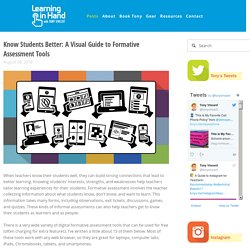

Teaching With Graphic Novels. Illustration by Gareth Hinds On March 14, 2013, teachers in the Chicago Public Schools were told, without explanation, to remove all copies of Marjane Satrapi’s graphic novel Persepolis (Pantheon, 2003) from their classrooms.

A day later, facing protests from students and anti-censorship organizations, Chicago Public Schools CEO Barbara Byrd-Bennett explained the move. The “powerful images of torture” on a single page of the book made it unsuitable for seventh graders and required the district to give teachers in grades eight through 10 special professional development classes before they could teach it.
The book was pulled from classrooms for those grades, but remained in school libraries. This is the paradox of graphic novels: The visual element that gives them their power can also make them vulnerable to challenges. At the same time, graphic novels are increasingly used in the classroom. From challenged material to classroom curricula Graphic novels as teaching tools.
Know Students Better: 17 Tools for Formative Assessment. When teachers know their students well, they can build strong connections that lead to better learning.

Knowing students’ interests, strengths, and weaknesses help teachers tailor learning experiences for their students. Formative assessment involves the teacher collecting information about what students know, don’t know, and want to learn. This information takes many forms, including observations, exit tickets, discussions, games, and quizzes. These kinds of informal assessments can also help teachers get to know their students as learners and as people. There is a very wide variety of digital formative assessment tools that can be used for free (often charging for extra features). One of the biggest advantages to using these kinds of tools is that they give every student in a class a voice. Creating Classrooms We Need: 8 Ways Into Inquiry Learning.
If kids can access information from sources other than school, and if school is no longer the only place where information lives, what, then happens to the role of this institution?

“Our whole reason for showing up for school has changed, but infrastructure has stayed behind,” said Diana Laufenberg, who taught history at the progressive public school Science Leadership Academy for many years. Laufenberg provided some insight into how she guided students to find their own learning paths at school, and enumerated some of these ideas at SXSWEdu last week. 1. BE FLEXIBLE. The less educators try to control what kids learn, the more students’ voices will be heard and, eventually, their ability to drive their own learning. Laufenberg recalled a group of tenacious students who continued to ask permission to focus their video project on the subject of drugs, despite her repeated objections. 2. Laufenberg’s answer: Get them curious enough in the subject to do research on their own. 3. 4. 5. 6. 7.
3 Quick Lesson Plan Ideas That Utilize Technology. Letting students use technology to create presentations, reports, journals, etc., can be an easy way to introduce technology in a lesson plan or project.

Guest Post by Rebecca Garland If you’ve been teaching longer than a few years, you already know that it can be tricky to be a “perfect” teacher all the time. While we might play the part of perfect when it comes times for evaluations and such, most of the time we tend to fall back on what we know – which usually isn’t the latest and greatest technology. Unfortunately the lack of planning time and huge amounts of expectations in the classroom create a challenge when it comes time to work in some technology-based lessons. In many cases, there just isn’t time to learn about the sites or figure out how to use them – no matter how great they looked in the thirty minute meeting you had with the technology specialist last week.
Rather than just blowing off improving technology in the classroom, you should look for ways to use it more simply. Integration of Information Literacy into the Curriculum: Changing Students’ Relationships with the School Librarian. Lesson%20Design%20and%20Development. The Curriculum Corner 123 — Weaving the Common Core into your Daily Curriculum. Standards for the 21st-Century Learner Lesson Plan Database. 20 14 ISTE Standards S PDF. A Media Specialist's Guide to the Internet: Grades K-5. Common Cores, Common Core Standards and Common Core Math. Learning Standards & Program Guidelines. Review and Revision For the first time in decades AASL will be using a multi-layered survey, data, and research approach to revise and rewrite its learning standards and program guidelines for your profession.

To ensure the standards meet the needs of the entire community it is critical that we hear from you! Visit the FAQ section for more information on how you can get involved. Overview | Project Plan Milestones | Frequently Asked Questions While the launch of new standards and guidelines is scheduled for fall 2017, the current AASL standards will not “go away” with the release of new standards. Learning Standards AASL's learning standards offer a vision for teaching and learning to both guide and beckon the school library profession as education leaders. Program Guidelines AASL's newest set of program guidelines defines the future direction of school library programs.
Learning4Life. Position Statement on Flexible Scheduling. The library program is fully integrated into the educational program so that students, teachers, and school librarians become partners in learning.
